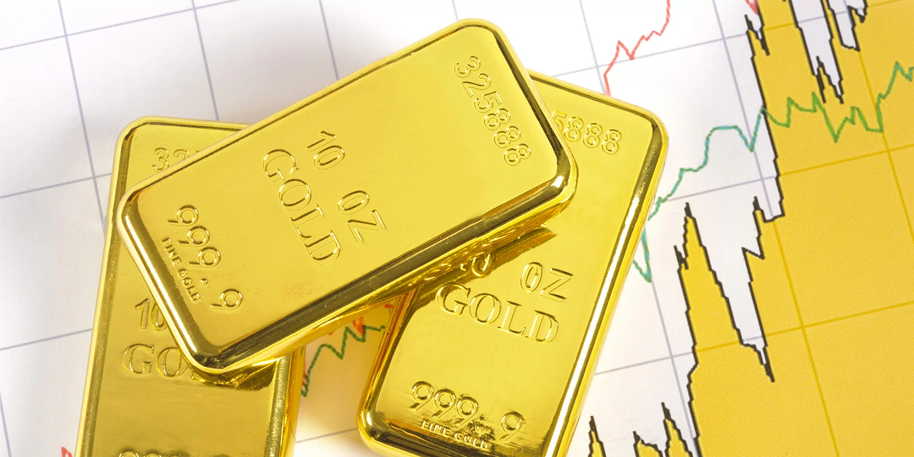FXEM - EMPIRE MARKETS - Precious Metals
To access the website's classic version and the new accounts, please click here
Advantages of Trading on Gold and Precious Metals with FXEM

Deep liquidity

Diversify your portfolio
Go long or short
Trade Gold, Silver, Platinum, Palladium

Safe-Haven Investments
World-Class Trading Platforms
Live Market Prices
Gold Trading and the Precious Metals Markets
The precious metals market is a dynamic sector that includes gold, silver, platinum, and palladium. However, gold trading stands out as the most popular and widely traded precious metal, attracting investors from all over the world as well as symbolising wealth and power.
What is Gold Trading?
Gold trading refers to the buying and selling of gold on financial markets. Gold is a commodity that is traded around the world, and its price is influenced by a variety of factors, including supply and demand, economic indicators, geopolitical events, and market sentiment. Gold trading can be done through various financial instruments, including futures contracts, options, exchange-traded funds (ETFs), and physical gold.
-
Global economic conditions.
-
Central bank policies.
-
Geopolitical events.
-
Inflation and interest rates.
-
Market sentiment and investor demand.
Strategies for Trading Gold
There are various strategies that traders use to profit from gold trading, depending on their risk tolerance and investment goals. Some popular strategies include:
-
Technical analysis :
Using charts and technical indicators to identify trends and price patterns. -
Fundamental analysis :
Analyzing economic and geopolitical factors that affect gold prices. -
Scalping :
Making short-term trades to take advantage of small price movements. -
Swing trading :
Holding positions for several days to capture medium-term price movements. -
Position trading :
Holding positions for several weeks or months to capture long-term price movements.By understanding the factors that affect gold prices and using effective trading strategies, traders can achieve success in this exciting market.
History of Gold Trading
Gold has been traded for thousands of years, and its value has been recognized by civilizations throughout history. From ancient Egypt to modern times, gold has been used as a form of currency, a symbol of wealth, and a store of value.
Here is a historical timeline of gold trading and precious metals:
-
3000 - 50 BC: Gold was first adopted as a form of currency in ancient Egypt. The metal was highly prized for its rarity and beauty. The first gold coins were minted in Lydia (modern-day Turkey) and became the standard currency of the Mediterranean region. The Roman Empire established a gold coin standard, which lasted for centuries. The Roman gold coin, the aureus, became the most widely used currency in the world.
-
1284 AD: The first gold market was established in Venice, Italy. The market became a hub for gold trading throughout Europe. 1792: The United States established a new standard with gold and silver coins becoming legal tender. The US dollar was defined as 24.75 grains of gold and 371.25 grains of silver.
-
1871: The gold standard was adopted by most major economies, including the United States and Great Britain. Under the gold standard, currencies were pegged to the value of gold.
-
1914 - 1971: The gold standard was suspended at the outbreak of World War I. Many countries begin printing money to fund the war, leading to inflation and economic instability. The US government confiscated gold from citizens and ended the gold standard. The government set the price of gold at $35 per ounce. By 1971, the US government ended the gold standard completely, allowing the price of gold to float freely on the open market.
-
2000s: The price of gold rose significantly due to economic uncertainty and the global financial crisis. Investors turned to gold as a safe-haven asset. Today, gold and other precious metals continue to be traded around the world and the market for these metals is highly liquid. While the role of gold and other metals in the global economy has evolved over time, these assets remain an important store of value and a symbol of wealth and power.
Going Long and Short on Precious Metals
Investors have different strategies when it comes to trading precious metals such as gold, silver, platinum, and palladium. One of the most common approaches is going long or short on these commodities.
Going Long
Going long on precious metals means buying them with the expectation that their prices will rise in the future. This strategy is based on the idea that these metals are safe-haven assets that tend to appreciate during times of economic and geopolitical uncertainty. Investors who go long on precious metals may hold them as a hedge against inflation, currency devaluation, or stock market volatility.
Going Short
Going short on precious metals means selling them with the expectation that their prices will fall in a future timeframe. This strategy is based on the idea that these metals are cyclical commodities that tend to decline during periods of economic growth and stability. Investors who go short on precious metals may use them to profit from market downturns, or to hedge against their long positions in other assets that are negatively correlated with precious metals.